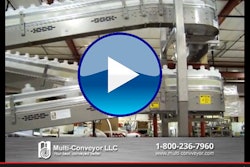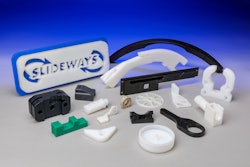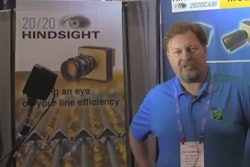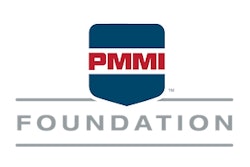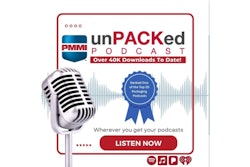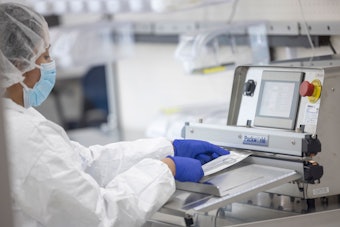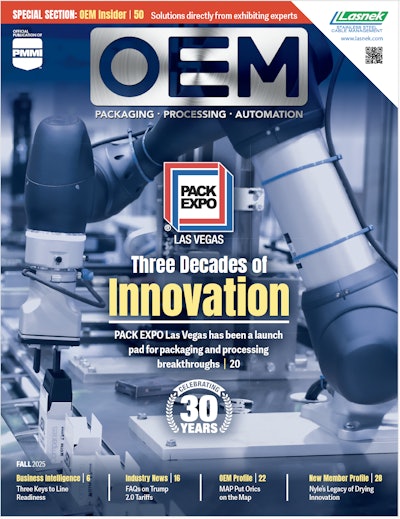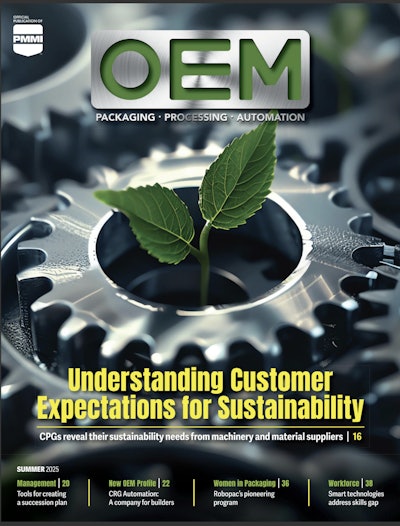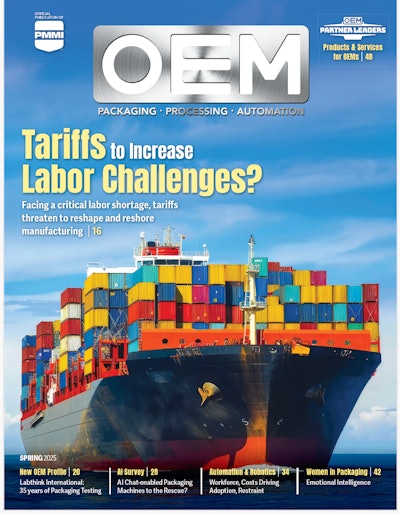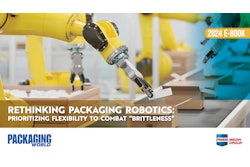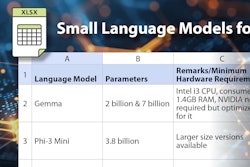Over the past several years, accelerating speed to market has been highly influential in the evolution of packaging and processing technology, as manufacturers strive to maintain that critical edge over competitors by having the latest and greatest products in the hands of their customers as soon as possible. Every opportunity to squeeze even a little more productivity, flexibility, or efficiency out of a line is fair game for consideration and, if validated, implementation (as quickly as possible, naturally).
In the world of packaging and processing, it seems, there’s no such thing as a “slow day” at work anymore.
So it’s understandable that system owners might feel the same sense of urgency about the new or upgraded equipment they’re investing in to provide some operational oomph. If they like what they see at a PACK EXPO exhibit, an OEM factory tour, or even a YouTube video, they may well want to do what they can to fasttrack the acquisition process in order to put that technology to work for them—and their bottom line—as quickly as possible.
Of course, there are certain elements to equipment procurement that, like the laws of physics, cannot be compromised, nor is there any room for assumption or guesswork on the part of the owner or OEM. Thorough due diligence is essential to ensure that the machine is indeed the best value for the owner’s immediate and long-term needs, including its compatibility with existing technology resources. Price and delivery schedule must be agreed upon. And the machine itself must be designed, built, and configured to the owner’s specifications, and to the OEM’s standard of quality.
But that doesn’t mean there aren’t opportunities to make the process more efficient and more productive for everyone involved. One focus of attention is the factory acceptance test (FAT), the last major OEM-hosted hurdle that verifies the equipment performs as the new owner has specified, and is ready for on-site testing and installation.
Dissecting the FAT
Most OEMs typically use the same approach to FATs. They develop the protocol and goals in step with the system owner’s requirements and expectations, including satisfying the appropriate safety standards and assuring the machine’s usability, repeatability, and maintainability.
For Aaron Johnson, VP of robotics and operations manager at BluePrint Automation, Longmont, Colo., that means getting a clear understanding of any client expectations for a FAT through weekly project and design reviews with the customer throughout the project life cycle.
“Through this process we eliminate alot of surprises that can come up in the FAT,” Johnson says.
But all that planning doesn’t ensure a perfect test process, according to Richard Bahr, president and CEO of MGS Machine, Maple Grove, Minn.
“Even though you pass the FAT, admittedly you could catch a ‘good’ one-hour run in a machine that isn’t truly ready,” Bahr says. “That is where experience can come in. Sometimes, we ‘pass’ the test, but find some improvements to make that we believe will make the machine more repeatable.”
Yet experience doesn’t always a guarantee a problem-free FAT either. Bahr admits, for example, that it can be difficult for the OEM simulate every element of the new owner’s operation in the OEM plant.
“Say you’re placing items onto an existing conveyor moving at 80 feet per minute, so you set that up for your test,” Bahr says. “But then in the owner’s plant, you find the bed of the conveyor is made from a different material and causes more bounce in the product that you planned for during your factory testing. It’s tough to account for everything.”
Other FAT problems can arise when OEM-owner collaboration falls short of achieving a full mutual understanding about expectations, or when all stakeholders aren’t involved. In the latter case, Johnson cites cases where the owner’s engineer is the only CPG-side person to attend the FAT. That might be sufficient to approve the machine for shipment, but could also leave operators and maintenance confused and wary when the machine arrives at the owner’s plant for installation.
“Including operators and technicians in the FAT does come at a cost,” Johnson says. “In return, however, you get critical feedback at a stage of the project when you can still make changes without affecting production. In addition, you get ownership from that person wants to see the machine succeed because he was a part of the FAT.”
Toward leaner FATs
Fortunately, there are ways to rectify these difficulties and ensure a more efficient, more productive FAT process that benefits both OEM and owner.
First and foremost is communication and preparation. No FAT process will be successful unless OEM and owner know exactly what is happening and why it’s important, and to align expectations. Johnson also recommends having a standard testing process in place to be used by default.
“Complete any tests prior the customer arriving, and then again when they arrive for the FAT,” he says. “There are many customers that don’t have standard processes for a FAT. Plus, you can win some considerable loyalty when you give them a complete, comprehensive test plan to take back to their team.”
A growing number of OEMs are conducting “pre-FATs,” which involve thorough testing of the more common failure points and user actions to reduce the time and punch list at the end of the process. Pre-FATs can be done internally, or with the owner in attendance. But like other aspects of the FAT process, pre- FATs needed to be carefully integrated into the product timeline to ensure sufficient time for correcting problems and keeping deadline intervals reasonable.
“Trial the tests the owner is going to put you through,” Bahr says. “Even if you don’t run the full time, run half of the time. You’ll get a good sense if you’re ready.”
For both pre- and full FATs, it’s essential to work with the customer to ensure there’s sufficient test material on hand that’s representative of what the owner will run on the machine once it’s installed. Special considerations may need to be addressed, such as storing the test material on site (especially if refrigeration is necessary), and simulating the owner’s upstream equipment.
Digital high-speed video technology is also a good way to keep elements of the FAT moving along. Johnson notes that BluePrint uses video extensively at several stages, including validating certain assemblies on the machine early on in the project. The video is then shared with the owner during a design review.
“We always video record our machines prior to shipment, and in most cases share this with the end-user,” Johnson says. “In some cases, with a standard machine that a customer may already have, a video is sent in lieu of an actual FAT.”
Video can be a valuable tool when the owner is a small to medium sized company that lacks the resources to attend the FAT. Colin Warnes, director of projects for ADCO Manufacturing, Sanger, Calif., says his company typically supplies several minutes of video of the machine running each of the new owner’s sizes, but no changeover.
“In some cases we have used Skype to live-stream a test run or changeover,” he says. “The video quality is typically poor, but it gets the point across.”
Finally, even OEMs that have been through hundreds of FATs cannot assume things will unfold flawlessly. Parts availability issues, weather, and even employee illnesses can throw a well-synced schedule off track. Though there may be enough “wiggle room” or contingency time to make up for delays, an OEM should never attempt to proceed with a FAT if it’s not ready.
“The end-user might forgive you if you call them off a couple of days ahead of time, but they’ll really be mad if they show up and you’re still bolting things together,” Bahr says. “Take your lumps.”
A blueprint for mutually assured success
As noted earlier, communication and mutual understanding are fundamental to making the machine testing and acceptance process as efficient and productive as possible. To help eliminate the guesswork, assumptions, and mixed messages that often undercut these efforts, PMMI’s recently formed OpX, [previously the Alliance for Engineering and Operational Excellence] has developed a new protocol document designed to provide OEMs and owners with practical help for conducting FATs.
Developed by OpX’s Capital Projects Solutions Group, a collaboration of more than 20 CPGs and OEMs, the protocol includes detailed checklists for all aspects of FATs, including planning, criteria, and the testing itself. Each attribute in the checklist describes individual and shared responsibilities of the OEM and CPG, and when it should be addressed during a machine acquisition project. Leadership guidance is also included to convey recommendations and insights gleaned from the development team’s shared history of FAT experiences.
For example, a planning section describes tasks and responsibilities for documentation, integration, staffing, and schedule, while a criteria portion defines factors such as success, readiness, safety, ergonomics, performance, maintenance, and regulatory and sanitary design. Testing includes considerations for safety inspections, conformance to specifications, pre-tests and on-site tests, induced failure, packaged product quality, changeovers, and review and follow-up.
Each section also addresses the role of an integrator that may be involved with a machine acquisition and testing program.
Ron Denig, senior project manager for Post Foods, Battle Creek, Mich., says the proposed protocol is not intended to be prescriptive or supersede FAT protocols already being used in the industry.
“It’s more to enable both the CPG and the OEM to have a clear understanding of the key elements of the FAT, and their respective responsibilities,” he says. “Both parties can walk through the document and eliminate items they agree are not needed.”
By addressing these issues before a purchase order is consummated, the CPG and OEM will have a full appreciation of what’s needed. “Ideally, the checklist will become part of the OEMs regular submittal to its customers, so that everyone knows what will happen up front,” Denig says.
Following a comprehensive peer review, the FAT protocol will be published in early summer. Once released, the protocol will be linked with other Total Cost of Ownership (TCO) documents now available on OpX’s website (www.opxleadershipnetwork.org).
“We’re hopeful the protocol will help the industry gain a common language, definition, and approach to FATs so that there are no missed expectations,” Denig says.


